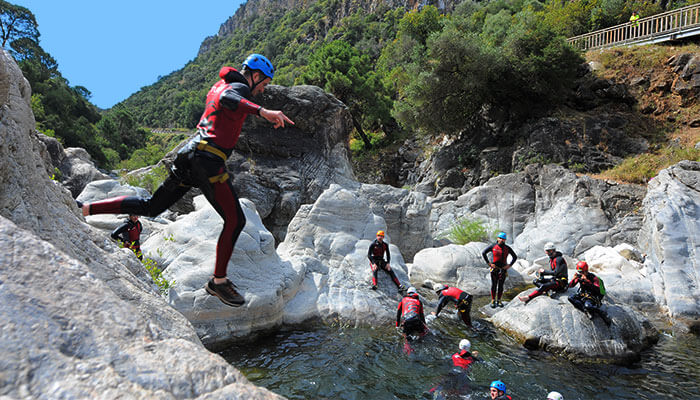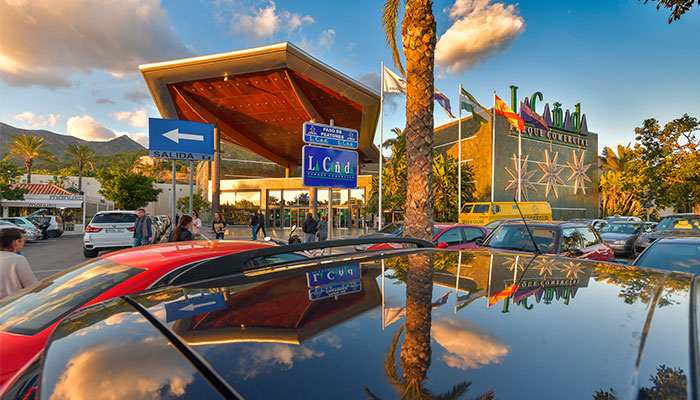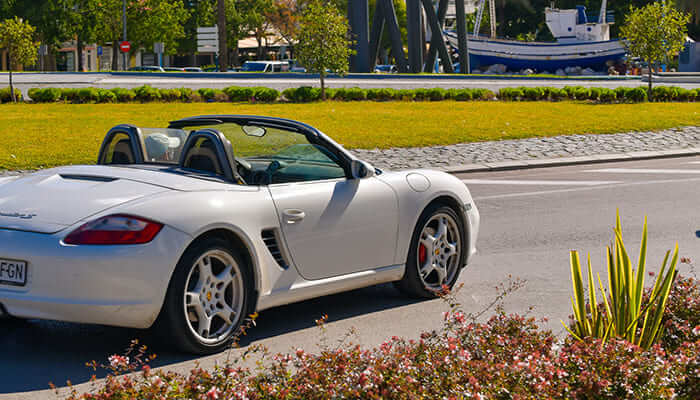What are digital nomads?
First off, you may be wondering what on earth a “digital nomad” is. And you would be forgiven for not knowing, since the term has only become common parlance in the last few years.
Essentially, digital nomads are wanderers of the working world: people who can work from anywhere on the planet as long as there is an internet connection, a roof over their head and, invariably, a decent coffee shop with a good Wi-fi connection and an even better chai latte.
The standard profile of a digital nomad is a blogger, social media “influencer”, affiliate marketer, travel writer, translator or entrepreneur who can afford him or herself the luxury of seeking out the most desirable places to live (ie. with the best quality of life), whilst gaining financial independence along the way.
A millennial's dream
And what better way to celebrate not being in an office and being your own boss than to move somewhere idyllic? I mean, that’s a millennial's dream, isn’t it?
Well, yes, and it’s a growing trend. For its part, Málaga province is certainly on the map as a digital nomad destination and it is no secret that this kind of self-employed worker is coming to the Costa del Sol with ever more frequency – perhaps for a combination of the following six reasons…

1. Quality of life
Somewhere near the top of many people’s list of reasons for emigrating or retiring to Spain – or investing in a second home here – is the exceptional quality of life it offers.
I know from first-hand experience what it is like to be completely enchanted by the country, its people, (in my case, as a linguist) the language, its food and the way people live here.
Due to the climate (which I’ll get to in a minute), days are longer and you’ll find there is a far superior work-life balance compared to most other countries. Culturally, this also means Spaniards are less stressed, get to spend lots of time as a family and place more importance on socialising.
From an outsider looking in – and I compare this to having previously worked in London – I feel that people in Spain don’t share the same “live for the weekend” vibe where, in other countries, you might spend the days between Monday and Friday yearning for the weekend again and not necessarily living each day to the full. I realise this is a huge generalisation, but I believe there’s something to it.

Here on the Costa del Sol, every need is thoroughly catered for, whether you are a single person, married with kids or a pensioner.
Digital nomads-to-be will love the numerous sport and leisure opportunities, since golf, tennis, pádel, soccer, rugby and a whole range of other sports are very well-represented on the Coast. What’s more, there is invariably a decent cross-section of expats who take part in sports here, which is great for recent arrivals to a new place.
You’ll never have to worry about going hungry, either. From local eateries and chiringuitos serving the catch of the day to international food outlets and Michelin-starred restaurants, there is something quite literally for all tastes.
Click on the following link to check out our comprehensive guide to Lifestyle on the Costa.

2. Cost of living
Let’s be honest, it would be foolish to consider moving somewhere without first checking how much money you need to make in order to cover the rent or how much the weekly shop is likely to set you back… or even smaller details like the cost of a beer or glass of wine at the local.
So, if you do the maths and compare it to your native country, there is a high probability that Spain is cheaper to live in than where you’re from.
For someone who earns money on the go and can have fluctuating months in terms of income, living in a country like Spain – and especially in the south – is a real blessing. You can get a three-course lunch menu (menu del día) from as little as €8 or €10, while a “posh” menu will still cost you less than €20.
Although rent has gone up in recent times, a single person can find either shared accommodation or an apartment very reasonably and, depending on the area, would realistically expect to pay anything from €500 to €1,000 per month.
For digital nomads whose globetrotting ends on the Costa del Sol and who want to make this their permanent home, mortgage concession is getting much more favourable and real estate remains abundant.
To check it out for yourself, go to our Property For Sale in Spain page.
3. Weather
At the risk of sounding predictable, the Costa del Sol’s climate is the envy of the rest of Spain, let alone the Europe at large.
It is easy to over-emphasise how fortunate the Coast’s residents are to receive 320 days of sunshine a year – as great a number as anywhere else on the continent – however it continues to rank highly as one of its expats’ main motivations for moving over here full-time.
There are also subtle differences in climate depending on where you are in Málaga province.
Marbella, for instance, boasts a very gratifying micro-climate. It is blessed with the same amount of sun as the rest of the coast, yet it remains temperate year-round due to being partly shielded from the wind and inclement weather by the Sierra Blanca and Sierra Bermeja mountains.
The provincial capital of Málaga, by contrast, is a relatively low-lying, flat and unsheltered expanse, meaning the mercury typically rises a few degrees higher there than on the rest of the Coast.
Elsewhere, the topography of the land ranges from river valleys to mountainous areas, while the extreme western Costa del Sol towards Gibraltar and the province of Cádiz is tempered by the famous easterly “levante” wind (hence why its coast is ideal for many water sports).

4. Infrastructure
It may seem a very trivial economic model, but the fundamentals of the tourist trade dictate that good weather and solid infrastructure are inextricably linked. People want to live and have services available to them in areas where it’s pleasant all year round and hot in high season.
Take Marbella and prestigious Puerto Banús, for example. It is no surprise that, given the aforementioned micro-climate – perfect for year-round tourism – these areas were the epicentre of expansion in the 1970s and 80s.
From the Golden Mile’s seemingly boundless choice of fine dining and boutique restaurants to the La Cañada shopping centre, businesses sprang up all over to improve the infrastructure for tourists and full-time residents. Nowadays, everything from private multi-lingual health clinics, dentists and physiotherapists to fancy nightspots and exclusive beach clubs can be found there.
And it is not alone. Infrastructure, services and amenities covering every market, nationality, budget and niche now exist up and down the Coast, so anyone wishing to make it their home will not be far away from a supermarket, bar, restaurant, gym or shopping area.
Unlike other European coastlines, where development and infrastructure are limited to sporadic built-up areas, the Costa del Sol offers digital nomads an enviable choice of well-established towns and urbanisations, both on the coast and inland.

5. Large expat communities
As I mentioned earlier, it’s a great helping hand to have your integration into a new place facilitated by fellow expats. Whether this be for playing golf, practicing yoga, attending business/networking events or going out socially, it’s always comforting to know they’re there.
After all, these expat communities speak your language and will understand any struggles you might be experiencing as you try to acclimatise yourself to your new surroundings. This is especially invaluable to a digital nomad, who doubtless divides his or her time between different places and moves on more transiently.
Here on the Coast, you only need to look at the number of cars registered to different countries to get a feel for the expat mix. Or the bars, restaurants and other established businesses run by owners from the UK, Ireland, France, Germany, Scandinavian countries, etc.
In short, as a digital nomad, you won’t have to go far to find fellow expats!

6. Scope for travel
One aspect of life on the Costa del Sol that is often underrated is its transport links and the fact that it’s an ideal location as a base for travelling internationally. For digital nomads, this is a decisive factor, as it is for many other peripatetic individuals.
The long-distance “AVE” train takes you from central Málaga to either Madrid or Barcelona, in two hours and five and a half hours respectively, while the Málaga-Costa del Sol airport (Spain’s fourth busiest) has direct links to hundreds of worldwide destinations.
Just past the western limits of the Costa del Sol lies Gibraltar, while further up the Cádiz coast there are more beach resorts that are perfect for a weekend away. From the port of Algeciras, you can get a ferry over to north Africa and go on a guided camel tour in the desert in Morocco or climb the Atlas Mountains.
Inland, Granada and the skiing/snowboarding mecca of Sierra Nevada are just an hour and a half from Málaga, while stunning Sevilla and the Patios Festival city, Córdoba, are both under a two-hour drive from anywhere on the Coast.
 en
en




 Vlaams-Nederlands
Vlaams-Nederlands
0 Comments
Leave a Comment
DISCLAIMER
The opinions and comments expressed by contributors to this Blog are theirs alone and do not necessarily reflect the views of VIVA Homes Under the Sun Ltd, any of its associated companies, or employees; nor is VIVA to be held responsible or accountable for the accuracy of any of the information supplied.
Have you got something to say?